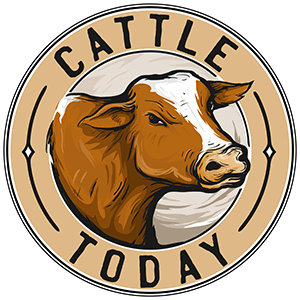Here's some good information on a link. It might take a minute for the page to load as it's document format, but it's worth the wait.
http://www.iowabeefcenter.org/pdfs/bch/03510.pdf
Here's a little more from the diagnostic end of it. Sorry it's so long.
Clinical Findings: Bloat is a common cause of sudden death. Cattle not observed closely, such as pastured and feedlot cattle and dry dairy cattle, usually are found dead; in lactating dairy cattle, which are observed regularly, bloat commonly begins within 1 hr after being turned onto a bloat-producing pasture. Bloat may occur on the first day after being placed on the pasture but more commonly occurs on the second or third day.
In primary pasture bloat, obvious distention of the rumen occurs suddenly, and the left flank may be so distended that the contour of the paralumbar fossa protrudes above the vertebral column; the entire abdomen is enlarged. As the bloat progresses, the skin over the left flank becomes progressively more taut and, in severe cases, cannot be "tented." Dyspnea and grunting are marked and are accompanied by mouth breathing, protrusion of the tongue, and extension of the head. Occasionally, vomiting occurs. Rumen motility does not decrease until bloat is severe. If the tympany continues to worsen, the animal will collapse and die. Death may occur within 1 hr after grazing began but is more common ~3-4 hr after onset of clinical signs. In a group of affected cattle, there are usually several with clinical bloat and some with mild to moderate abdominal distention. Death rates as high as 20% are recorded in cattle grazing bloat-prone pasture, and in pastoral areas the annual mortality from bloat in dairy cows may approach 1%. There is also economic loss from depressed milk production in nonfatal cases and from suboptimal use of bloat-prone pastures. Bloat can be a significant cause of mortality in feedlot cattle.
In secondary bloat, the excess gas is usually free on top of the solid and fluid ruminal contents, although frothy bloat may occur in vagal indigestion when there is increased ruminal activity. Secondary bloat is of sporadic occurrence. There is tympanic resonance over the dorsal abdomen left of the midline. Free-gas produces a higher pitched ping on percussion than frothy bloat. The distension of the rumen can be detected on rectal examination. In free-gas bloat, the passage of a stomach tube or trocarization releases large quantities of gas and alleviates distention.
Best of luck with your steer. Let us know how it goes.
Take care.
